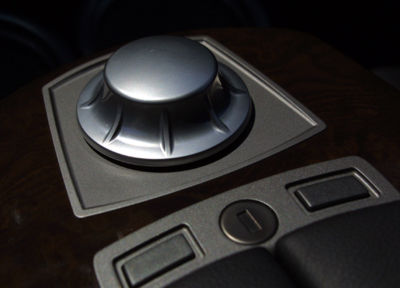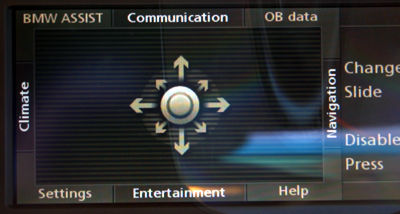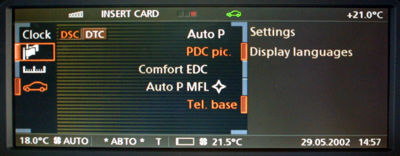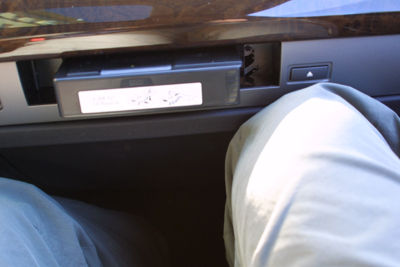|
Artemy Lebedev
§ 90. Sundae for first class passengersJune 7, 2002 |
|
You can’t get by without a competitive edge in the modern world. You’d sooner tie yourself in knots to think up something new than let your rivals get ahead of you. It primarily concerns equipment, electronic devices and software producers. Companies working in other segments feel bad because they can’t keep thinking up new options for their products. It’s hard indeed to churn out a potato peeler with new options every year. |
|
The automotive industry has always been a field where humankind made pipedreams a reality. For a century, the car driving interface hasn’t undergone any changes: turn the wheel to the right to take a right turn, turn it to the left to take a left turn. The rest of the car has been regulated in an equally intelligible, natural and predictable way: one button turns on the headlights, another one—the radio, a pedal is pushed, a handle is shifted. That was the time of good interfaces. |
|
When the number of functions crosses a certain line, you face a problem with placing buttons, levers and switches on the control panel—after all, a TV remote control can’t look like a nuclear power plant dashboard. |
|
A monitor looks very alluring as a centralized interface to control hundreds of functions: it displays information in a compact, universal and dynamic way. |
|
Car makers increase the number of functions every year and at the same time discard superfluous physical buttons. Today it’s hard to find a new model of a luxury car produced without a computer. A TFT display is now hung up in the very middle to face the driver. |
|
A computer in a car leaves one with a feeling of utter bewilderment: it comes from another world—a thing made by people who know nothing about the simplicity of control. |
|
The XXL Auto magazine invited me for a test drive of BMW 745i. This model is equipped with a slow computer that’s sold under the sweet-sounding and meaningless marketing name iDrive. The computer is managed by means of a silvery flat knob controller located where one would normally expect to find a gearshift lever—between the front seats. |
|
To be quite candid, it was the first time I was sitting in a car with the Settings menu. |
 The two buttons before the controller have no relation to iDrive: they are pushed to open the right and left hand halves of armrests to access the glovebox. Between the buttons there’s a key hole to lock the glovebox. |
|
The controller is in essence a nailed-down computer mouse with a limited functionality. The knob can be pushed, turned clockwise and counterclockwise and shifted in eight directions. |
|
Below is what the main menu of iDrive looks like: |
 |
|
The controller’s movements in eight directions are only needed to select the major items of the menu—this functionality isn’t used for anything else. If you are currently in the Communication section and shift the controller downwards, you will skip to the Entertainment section without a warning. According to the developers’ logic, the driver is supposed to memorize the positions of the eight menu items. But since the driver is not that willing to jog his memory, he tries to pick the desired section from the main menu, which becomes available by yanking the controller twice in any direction (a distorted idea of a “double click”). Since the controller is round-shaped and because it rotates, yanking it twice in one direction may take more effort than originally expected; if you fail to do that, you’ll be led to another menu item. In doing so, remember: you keep an eye on the road. |
|
Here’s a curt description of iDrive’s loveliness provided at BMW international website: “Using dynamic force feedback technology, the Controller communicates with the person using it. The position in the current menu also appears on the Control Display.” |
|
The quoted description fails to give one the idea of what exactly the buyer is going to get for a hundred thousand dollars. With the system test behind you, it’s still harder to make up your mind on buying the car. The advertising says: “The position in the current menu also appears on the Control Display.” Let us take a look at the menu and try to figure out where we are. |
 |
|
The right answer is we are in the Settings section of the main menu, in the running gear control subsection (see the car pictogram). In this subsection we’ve focused in on another subsection—Display languages, but haven’t entered it yet. It’s also worth noting that the heading in the prompt message on the right hand side doesn’t differ either in its look, or style, or size, or pixels, or font—from the text of the prompt message. Settings and Display languages both look like two menu items. |
|
Now try to answer the following questions (by making the most of your vocabulary in all the languages you know): what’s the difference between DSC and DTC, what’s PDC pic., what’s Comfort EDC, and why Auto P is so remote from Auto P MFL? |
|
The biggest mistake of BMW engineers was not stuffing the control of seven hundred (as the advertising claims) functions into a single controller, but rather relocating important and useful modes into the iDrive. Parking brakes control and the turning off of the dynamic thrust system should not be entangled in the maze of a menu that’s impossible to browse while on the move. |
|
A small image with the DTC inscription in the settings menu (try to find it as fast as you can on the illustration above) should in theory allow a professional driver to turn off the dynamic thrust system to switch to the controlled skidding mode. A professional racer is expected to perform up to four operations per second. With the iDrive system, he will never have a chance to do that: while skipping between the menu items, you have to wait for around a second until images appear on the display. |
|
For a few minutes after taking the driver’s seat you are delighted by the simplicity of the dashboard: a minimum of buttons and indicators. Afterwards you become aware that it’s all not as simple as it appears. The availability of the DTC on/off push button alone would spare you the trouble of getting inside the computer menu; it would increase safety, too. |
|
The struggle between two schools—computer and engineering ones—is apparent not only in the presence of the awkward iDrive that has absorbed some of the customary handles and buttons. There are two CD players in the car. One of them—a 6CD player—is only controlled through the iDrive. The other—a 1CD player—is controlled as it is. Controlling the conditioned air flow toward your head through the menu takes quite a while, while temperature is regulated by a usual switch on the dashboard. These schizophrenic features suggest that some of BMW engineers expressly opposed the idea of turning the new model into a tamagotchi, but only partially succeeded in defending their cause. |
|
The only positive impression was made by Immersion licensed technology—a tactile feedback. The controller allows you to physically feel the transfer between menu items groups and your browsing movements among menu items. When there are no items (in the main menu, for instance), the knob rotates freely. Nevertheless, there were some problems here, too: if the controller is rotated in one direction several times, it starts to jam. |
|
A technical genius who placed the 6CD cartridge eject button in front of the passenger seat never gave thought to human anatomy—or, more specifically, legs. When I was sitting in the passenger seat, my knee pushed that button four times; when the driver stepped on the gas pedal, the cartridge would slide out and fall on the floor. |
 |
|
Large airlines (just like car makers) are in competition with each other, struggling to offer increasingly comfortable conditions to first class passengers. |
|
In the first class, asking for a blanket and a pillow is OK. By increasing the legroom by 8 inches the airline earns the right to brag about its infinite care for people who pay $2000 for a ticket. |
|
Onboard a plane the quality of meals and the level of service are things of utmost importance. First class passengers are served sliced meat on porcelain. They are offered metal forks instead of plastic. They savor the wine that costs two dollars more than that poured in economy class passengers’ glasses. |
|
Sundae with a slice of kiwi is a luxury beyond imagination onboard an airplane. One serving costs the airline 20 cents. But when you are 6 miles high, you can’t have ice-cream unless you pay for it the price of a Russian car. |
|
Similarly, a lousy PC operated by Windows CE with slow graphics and a lame interface is only available in luxury cars. |
|
|
|